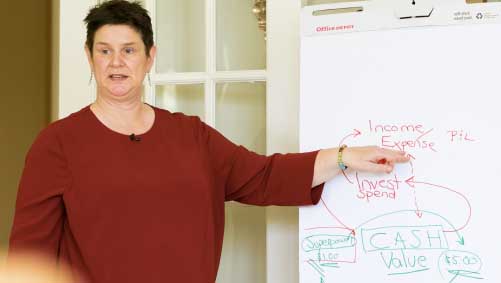
Time Creates the Story: An Easy Fix to Make Accounting FUN
I had a major realization at an event this weekend: it’s time to talk about the importance of context when it comes to your finances.
Let’s face it, numbers can be intimidating.
In the small business world, accounting and finance often get reduced to mere numbers.
While that may be fine for bookkeepers and accountants, as business owners, we need something more.
We need a story—a narrative that we care about deeply for our business.
It’s not just about seeing a number at the bottom of a report and shrugging it off with a “so what?”
Every month, we should strive to understand the value behind those numbers.
And here’s where a good CFO comes in—they have the power to transform those numbers into a compelling story.
It’s what CFOs do in large corporations, and it’s exactly what they should do for small businesses too.
(And I firmly believe that entrepreneurs of all sizes should have access to CFO services of that caliber — if you’re not getting the results you want from your books, give us a call.)
A story makes sense because it provides context.
And just like any great story, we need to know where it takes place, who the key players are, where it begins, where it’s headed, and what the journey looks like in between.
What struck me is that a story always has context.
Sometimes, when we receive numbers and reports from our bookkeepers and accountants, we tend to judge them instantly as good or bad without any context whatsoever.
But here’s the good news: we can change that.
There’s a simple way to infuse context into those monthly financial reports or numbers.
If you’re not already getting this from your bookkeeper or accountant, I strongly suggest you reach out to them and make it happen.
Here’s what you can do:
Put those numbers in the context of time.
Here’s the thing: if you have a bookkeeper who’s diligently handling your books on a monthly basis, they already have the revenue and net income numbers for each month.
Yet, oftentimes, the reports we receive only show how we did in the current month.
However, most accounting systems, such as QuickBooks or Xero, can generate reports that showcase the performance of those numbers month after month.
YOUR FIRST STEP
So, here’s your first step toward turning your numbers into a story: call up your bookkeeper and tell them you want to see the last 12 months summarized in one document, with a column for each month.
This way, you can track how things have been moving—whether revenue increased from January to June, if there was a dip during the summer, or if this November’s figures are higher than last year’s.
By putting your numbers in context, you’re taking the first step towards transforming them into a story rather than a nuisance.
So pick up that phone, reach out to your bookkeeper, and say, “I want to see the bigger picture. Show me the last 12 months on one piece of paper, so I can truly understand how things are progressing.”
Get ready to witness the magic of context in your financial journey.
The story behind your numbers is just BEGGING to be unraveled!

Author, Virtual CFO, and Finance Coach
“Your First CFO: The Accounting Cure for Small Business Owners” on AMAZON





